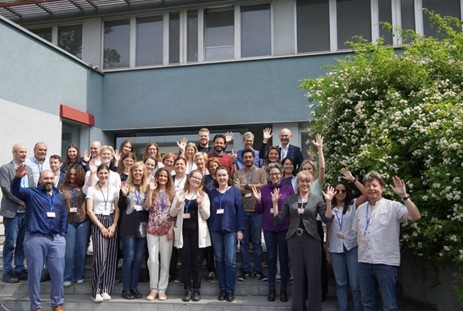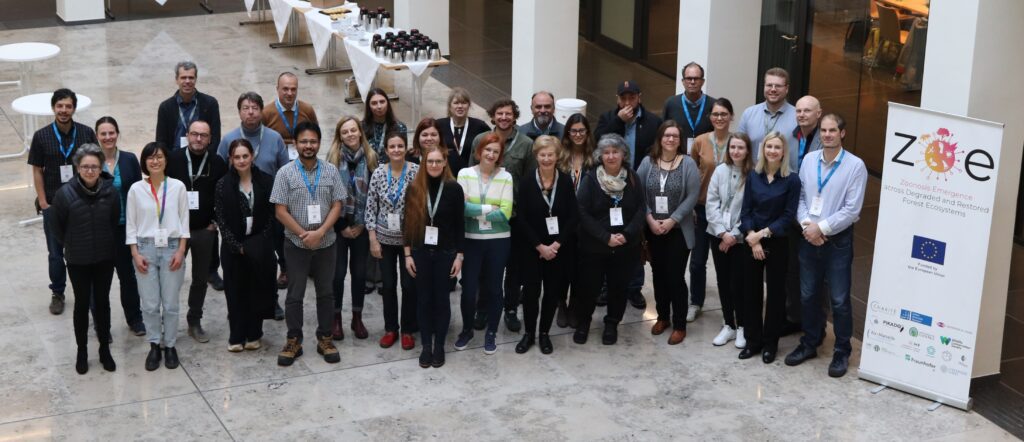Project Midterm Meeting - The ZOE team meets in Bratislava
From 22-24 May 2025, Kerstin Krellenberg, Johannes Richter, Charlotte Tienes and Julia Wesely joined researchers from across Europe and Central America representing diverse scientific disciplines (including virology, ecology, sociology and more) for three days of intensive exchange to discuss the interlinkages between zoonoses emergence, biodiversity loss and deforestation. The mid-term meeting of the ZOE consortium, hosted by the Biomedical Research Center of the Slovak Academy of Sciences in Bratislava, marked another important milestone in the project’s development after months of virtual collaboration.
The meeting provided a valuable opportunity to discuss all work packages in depth, to review preliminary results, and to start aligning them toward a shared outcome – highlighting how contributions from each discipline may be strengthened through interdisciplinary and transdisciplinary cooperation. Together with the project partners from Work Package 2 at University of A Coruña, we presented the state of progress of our research related to behavioural, social, and cultural factors influencing the emergence and spread of zoonotic diseases among settlements/people. This included the ongoing development of case-tailored methods, engagement of local communities, applying for ethical permits as well as organising the fieldwork in the five case study regions, which are located in Slovenia, Slovakia, Guatemala, Costa Rica and Mexico.
The team from Work Package 2 moreover visited one of the project’s case study sites north of Bratislava (Marianka, Stupava and Záhorská Bystrica) to get to know the local setting. Together with Viktória Čabanová, a ZOE researcher from the Bratislava team, who is also a resident in the town, we aimed to gain a first impression of the activities people engage in (both local livelihoods as well as leisure activities), potential transmission pathways and their relevance to people’s everyday lives. We visited both the regenerating area in Stupova (2) as well as the village of Záhorská Bystrica (3&4). These insights will further support the development of a tailored methodology for the case study in Slovakia.
The highlight of the final day was a field trip with a local NGO called BROZ to a river renaturation project along the Danube sidearms, where we could see conservation efforts and learn about their relevance to biodiversity protection. The visit showed how improving the health of the local ecosystem closely aligns with the ZOE-Project’s One-Health approach to interlink human, animal and environmental health. It was a suitable ending for our meeting in Bratislava that highlighted the benefits of collaboration across widely different disciplines.
More about the ZOE project:








